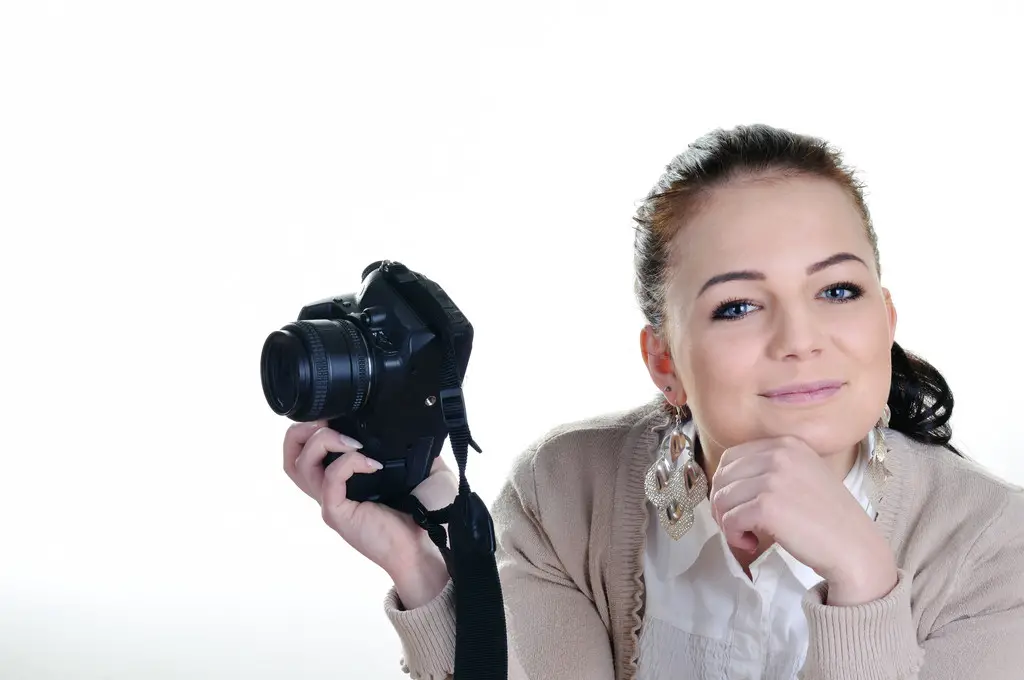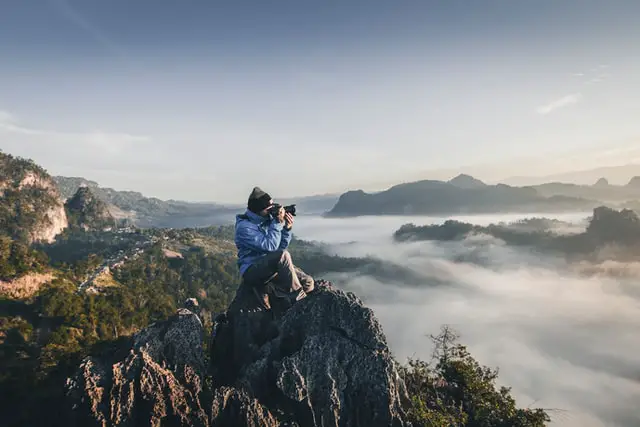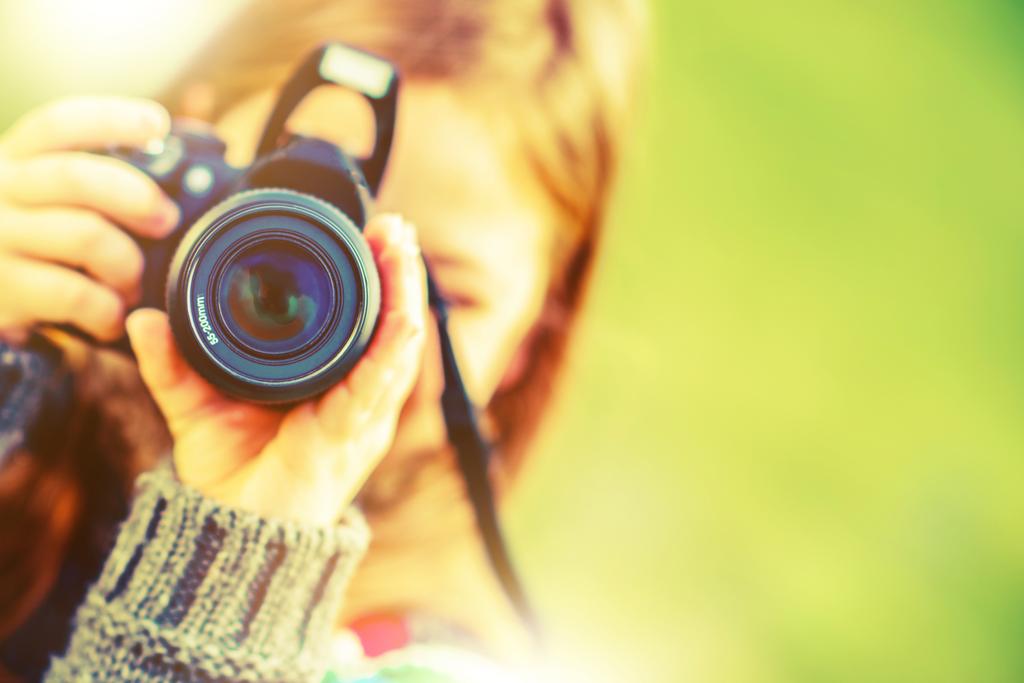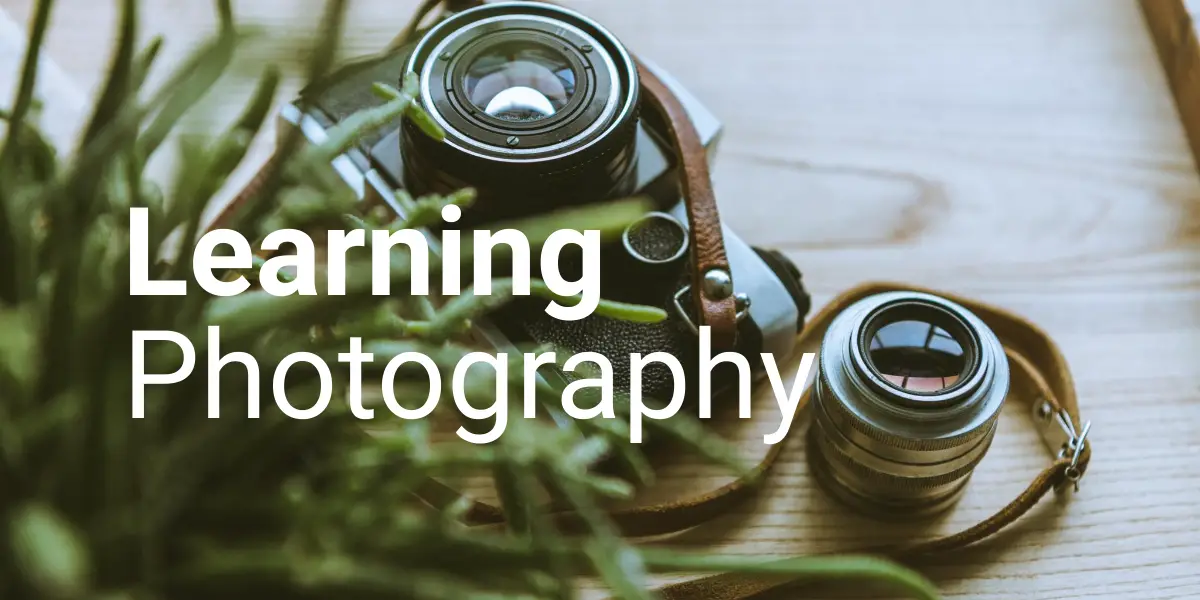Photography is a super exciting hobby. Do you finally want to learn how to take photos properly?
Then you are exactly where you should be. In my 22-step guide to learning photography, I’ve packed our very personal experiences that I’ve had along the way.
How to learn photography: This is guaranteed to work
We’re about to start with our 22 steps, but we still need a few short words at the beginning.
More than 10 years ago, I was at the very beginning and taught myself photography.
I know exactly what is important and can give you our best tips so that you can quickly reach your goal, learn photography, and finally take great photos.
My very personal way
My “photography career” was a very classic case. At some point, I bought a single-lens reflex camera and then started snapping wildly, of course in automatic mode.
At some point, I wanted more and started to work more intensively with my cameras. I read books about photography, we watched videos, and I even took a course at the adult education center.
None of that really got me any further. I painstakingly taught myself everything and it took many years before I could really say: Now I can take good photos.
I want to help you make it much faster for you. I know what is important and what information photography beginners really need, and what not.
I have summarized all my knowledge about the fastest way to learn photography in this article for the first time in a step-by-step plan, and now we don’t want to keep you in suspense any longer.
Here we go!

The 22-steps on the way from photography beginner to professional
To give you an initial overview, we’ll show you all the steps in our instructions in quick succession.
If you are not at the very beginning and have already done one or the other, you can look at the following steps and skip a few steps.
Basically, we thought something about the order. So it makes perfect sense to follow this plan exactly.
Before you start learning photography: You need this at the beginning
This part includes everything you should do before taking your first photos.
#1 Think about what your goals are
Before you buy your first camera and any accessories, you should think about what you actually want to photograph and to what extent.
Do you just want to take photos as a hobby and bring back nice photos from your travels? Or maybe you even plan to make photography your profession?
Set yourself very specific goals and ideally write down by when you want to have achieved this goal.
Think about concrete milestones over time and write them down. This can also be something as simple as “I want to go out and take pictures five times this month” or “I want to take pictures of the sunset next weekend.”
We have found that writing these goals down helps tremendously. This creates a certain commitment and ensures that you really make progress.
#2 Get a good entry-level camera to learn photography
If you’re just starting out, you shouldn’t spend thousands of dollars on your first camera right away.
I actually see it very often that photography beginners first buy outrageously expensive equipment and then wonder why the photos don’t turn out that great.
I, therefore, recommend that you start with a not-so-expensive model because you can definitely take really good photos with it.
Fortunately, there is a very good selection of entry-level cameras for every budget. You can get a cheap entry-level camera for as little as $250, but I recommend spending a little more money. For $500 to $600 you can get really good entry-level cameras that you will have fun with for a long time.
When you buy your first camera, you will find that the choice is huge. There are SLR cameras, mirrorless system cameras, bridge cameras, and compact cameras. Phew, who’s supposed to keep track of that?
I recommend a reflex camera or a mirrorless system camera to get started. With these cameras, you can change the lens. This allows you to upgrade your camera with better lenses in the future.
The best SLR cameras for beginners
- Canon EOS2000D
- Nikon D3500
- Canon EOS250D
- Nikon D5600
SLR cameras have been the ultimate for many years and are still a good choice.
But they also have disadvantages, such as weight and size. If you prefer to travel with slightly lighter equipment, we therefore recommend a mirrorless system camera.
The best entry-level mirrorless cameras
- Sony Alpha 6000
- Olympus OM-D E-M10 Mark III
- Panasonic LUMIX DMC-GX80
Mirrorless system cameras are smaller and lighter than SLR cameras and often offer very good image quality. Many professional photographers now use system cameras and we are one of them!
However, the battery in system cameras does not last as long and they are usually a bit more expensive than SLR cameras, and the lenses often cost a bit more.
#3 Get a nice camera bag to go with it
An important accessory for your camera is a sturdy camera bag.
You don’t think of it immediately, but at the latest when you want to start with your camera for the first time, you will realize that a bag is indispensable.
I can recommend the following camera bags for photography beginners with small equipment.
Best camera bag for mirrorless cameras: Water-resistant, compact, and perfect for everyday use, fitting a system camera and accessories such as batteries and charger or small personal items such as a wallet.
For SLR or large system cameras: Waterproof shoulder bag for SLR or large system cameras, including interchangeable lens and accessories.

#4 Check your camera manual
So, you have now bought your camera and maybe even a pretty photo bag. Congratulations! You’ve already taken the first steps towards great photos.
When you unpack your new camera, you should first take a look at the manual and don’t put it aside carelessly.
It’s not just boring stuff about safety precautions and how to charge the battery. There is also some helpful information about the basics of photography and tips on optimally setting up your camera model.
Even if the manual may not always explain everything really well, you should always have it to hand. If you are looking for a specific setting, you can always look where you can find it on your camera.
#5 Get support to learn photography
You can teach yourself how to take photos, no question about it. I have taught ourselves a lot, so I know how exhausting and time-consuming it is.
That’s why I’ve put all our photography knowledge together in our online photography course. I have thus created a course that I longed for when learning to photograph.
Several thousand participants have already learned the basics of photography in our course, and we are always thrilled when we receive great feedback from our participants and are able to admire the photos taken.
All information about our course can be found here, and you can get started there:
To the online photo course for beginners
Learning to photograph has never been so much fun! In my online photo course, I will show you how easy it is to take beautiful photos. Want more info? Stay tuned!
Now it can finally start. In this section, we give you practical tips for learning to take photos.
#6 Forget automatic mode
After unpacking your new camera, you probably tried it out immediately and took your first pictures in automatic mode.
That’s perfectly fine to start with. But if you want to learn how to take photos properly, you won’t get anywhere with the automatic mode.
I always like to compare it like this: The automatic mode is good for taking pictures. But if you want to take pictures, you must get out of the automatic mode. Because taking pictures is like taking snaps, just crass.
If you really want to learn how to take photos, you’ll need to make manual adjustments to your camera, and if you really want to be creative, there’s no way around that either.
You can’t photograph subjects like cars driving by with motion blur or pictures with blurred backgrounds in automatic mode. The camera then adjusts all the values so that everything is well exposed and sharp as possible, but only that.
Even with everyday motifs such as sunsets or a family celebration in a poorly lit room, you will reach your limits with the automatic mode.
So, get out of the automatic mode, because that’s when the fun of photography really begins.
#7 Discover your camera
If you no longer take pictures in automatic mode, you must take care of your camera settings yourself. This is where learning to photograph really begins.
Many beginners have great respect for technology. At first, it seems like a book with seven seals. It’s not as complicated as it might seem at first.
Ultimately, there are three important terms you should know and understand: shutter speed, aperture, and ISO.
Of course, other settings come into play, but understanding these three will get you started.
What is behind these three terms? We explain this in detail in our online photo course, but here is a very brief and concise description of what is behind the three terms:
- Shutter speed determines how long light falls on your camera’s sensor. The slower the shutter speed, the more light falls on the camera. You must take pictures with longer shutter speeds in poor light conditions.
- The aperture lets you control how much light falls on the sensor. The wider the aperture is open, the more light enters. You can also use the aperture to influence whether the background of your motifs should be sharp or blurred.
- The ISO, in turn, determines how sensitive the sensor is to light. The higher the ISO value, the more sensitive the sensor is to light. That means you can take brighter photos in low light with a higher ISO.
#8 Practice, practice, practice
Patience and practice are the be-all and end-all when learning to photograph.
Try to hold your camera in your hand as often as possible at the beginning. Take one function at a time and try it as much as possible. Regular practice will only get you better photos, and the more you shoot, the easier it will be to adjust the settings.
It doesn’t have to be a lot of effort either: you’ll find lots of exciting motifs to practice in your apartment or in the garden.
You’re slowly learning the basics of photography. Now you can focus on the details.

#9 Buy a tripod
Sooner or later, you will find that you need a tripod. For example, if you want to take photos in the dark, you definitely need a tripod. Otherwise, your photos will be blurry.
You are spoiled for choice when buying a tripod: you can get a shaky plastic tripod for as little as 10 euros. But you can also spend several hundred euros on a tripod.
We can recommend the following tripods from different price ranges:
- Rollei Traveler No. 1 Carbon: Our travel tripod. It is handy, very light, and can carry cameras weighing up to 8 kg. We don’t want to miss it anymore on our travels!
- Manfrotto MKCOMPACTACN-BK: Light and affordable entry-level tripod for small and light cameras up to a weight of 1.5 kg. The light weight makes it good for traveling and hiking.
- K&F Concept tripod with center column system: Thanks to the 90° center column system, this tripod is suitable for landscape photography and macro photography, and photos close to the ground.
- Rollei Rock Solid Gamma II: Super stable tripod for advanced photographers that is stable even in wind and weather.
#10 Learn to use the light for your photos
How you set the aperture, ISO, and shutter speed mainly depends on the lighting conditions.
Both too much and too little light make it harder to get a decent picture. The capabilities of your camera and lens also play a role. If you know how light affects your photos, you can take targeted countermeasures.
You can adjust your camera’s settings to the light conditions or consciously plan your photo tours when the light conditions are optimal.
You can take particularly beautiful photos in the so-called blue hour and the golden hour, which are around sunrise or sunset.
If you are familiar with the technical basics of photography, it is time to take a closer look at the subject of light and try out which settings work best in lighting conditions.
#11 Deal with the composition of the image
But technology is far from everything. Understanding the technology is necessary. But just because you know how aperture, shutter speed, and ISO work, you don’t automatically take great photos.
This is only the first step. The second and at least as important step is the image design.
A technically flawless photo can still look boring. So make sure you deal with the different stylistic devices of image design as soon as you have mastered the technique.
Symmetry, specific color compositions, the rule of thirds, or framing your subject are a few photo design options. Perspectives and the conscious use of lines are also great means of image design.
In our photo course, the image design is the second very extensive part next to the technique. You will find a lot of inspiration and learn to train your photographic eye there.
With clever image design, you can turn a rather inconspicuous motif into a wow photo
#12 Practice, practice, practice
We can’t say it often enough: Practice is the be-all and end-all when learning to photograph!
Still grab your camera as often as you can, click through the menu, turn the mode dial and take lots of photos.
Try out the different stylistic devices for image design and improve your photographic perspective.
#13 Buy a second lens
If you just bought your first camera, you probably bought a standard zoom lens with it or it came right in the kit.
These are handy all-rounder lenses to start with, allowing you to shoot pretty much anything.
However, such lenses also have their limits.
For example, they are never particularly bright, so you can no longer take such good photos in poorer lighting conditions. The image quality also quickly degrades with zoom lenses when zooming in.
Once you’ve reached the full potential of your zoom lens, it’s time to start looking for a more specialized lens.
Depending on what you like to photograph, you have the choice between telephoto lenses, wide-angle lenses, portrait lenses or macro lenses.
We have written down which lens is the right choice for you in our detailed lens advice:
My tip: We recommend buying a fixed focal length as a second lens. Fixed focal lengths are ideal for learning to photograph, they are extremely bright and you can often conjure up particularly blurred backgrounds with them. That’s why you should definitely buy a fixed focal length.
#14 Look at your photos and learn as you go
A tip we always give to photography beginners: Look at your photos and learn from them!
It is incredibly helpful if you take a close look at the photos you have already taken. This will help you understand what you did well, what you would do better now, or why the photo didn’t turn out the way it was supposed to.
In this way, you often recognize frequent weaknesses in your photos and can improve them in a targeted manner in the future.
Alternatively, you can also take photos by famous photographers and analyze them. How are the picture elements distributed, what makes the photo so special?
All of this helps you train your photographic eye and pay more attention to certain image details when taking photos.
#15 Take photography challenges
You must practice a lot if you are just starting out with photography. And so that it doesn’t get boring because at some point you don’t know what to photograph anymore, you can start a photography challenge.
It works like this: For a fixed period of time, for example, a week or a month, you photograph a different topic every day.
You can choose topics such as family, water, fashion or even certain colors. Your creativity knows no limits.
Simply make a weekly schedule in which you photograph a new topic daily.
It keeps you engaged, it’s exciting, and you can find out which photography topic inspires you the most.
#16 Edit your pictures
I am often asked: Do you really have to edit your photos? Yes and no!
Basically, you don’t have to edit your photos because the camera usually produces very usable photos even without image editing.
But there are certain things that you can only do later on the computer: repair small mistakes, increase contrast or adjust the exposure afterward and correct over-or underexposed areas.
You don’t have to do these things, but they ultimately take your photos to a whole new level.
Nowadays, almost every photographer works with an image editing program.
Not only can you iron out small mistakes, but you can also make your photo a bit more contrasting and spectacular.
The absolute favorites are the Adobe products Lightroom and Photoshop. Lightroom in particular, is ideal for image processing and we also use it.
With Lightroom, you can, for example, lighten shadows, change color tones or reduce image noise. You can put filters over your pictures or make pimples disappear from your face.
Another benefit of Lightroom is that it lets you organize and catalog your images. This is especially advantageous if you take a lot of photos and want to edit several photos at the same time.
With Photoshop, you can, for example, incorporate fonts into the image, change the background or add additional elements to the photo.
Photoshop is more suitable for professional use and also much more complex to use than Lightroom. With the Lightroom subscription, you get Photoshop directly with it and can try it out. I rarely use Photoshop myself.
#17 Practice, practice, practice
The more you practice, the faster you’ll learn how to take photos – just like when you learn an instrument or a foreign language.
It is also helpful to find a comrade-in-arms. Then you can motivate each other, exchange knowledge and judge your photos together.
That is fun and drives forward!
#18 Discover photography with filters
Another very useful accessory is lens filters. For example, you can blur water and sky or reduce reflections directly when taking photos.
I recommend buying a polarizing filter and an ND filter.
#19 Try new things
At this point, you probably already have a certain topic that you like to photograph the most. Whether it’s portrait photography, landscape photography, or animal photography – always try something new. Worth it!
It may well be that you will discover other areas of photography that you enjoy and are good at.
#20 Find your photographic style
Most photographers specialize in one or two specific types of photography and mostly shoot in those areas.
First, because they’re just more interested in a certain topic, and second, they probably mostly have gear for it anyway. And thirdly, because they’ve gotten really good at it!
While it’s not a rule that you should shoot only landscapes or only people, it makes sense to specialize in one or two areas.
Then you can delve much deeper into the topic and become really good and also develop your very own photographic style in your field.
#21 Practice, practice, practice
Even if you’ve gotten really good and your photos are impressive, it’s always worth continuing to practice.
You never stopped learning how to take photos.
There are endless motifs, new and better technologies are constantly being developed, and there is always something new to discover.
#22 Be proud and happy about what you have achieved
From quick snaps to the right shot – you’ve made it! Your photos are great, expressive, and earn admiration.
Be proud of your skills and your newly acquired knowledge. How about your own social media channel where you can present your work? Or maybe even a small exhibition?
It doesn’t matter whether you just want to be a hobby photographer or you want to turn photography into a real job: Show your skills, after all the effort you deserve it!
Those were my 22 steps to learning photography. I hope I was were able to motivate you to discover this great hobby for yourself.
Do you have any questions or suggestions? Or have you already walked the path yourself, and can you add more tips? Then leave us a comment!
FAQ
How do I start photography?
The same way every great photographer started. Take out your camera, and visit some nearby places where you can find some fantastic test subjects. And try experimenting with the camera settings. This will help you to understand the very basics of photography.
What should a beginner photographer learn?
Well, there are some basics of photography that you must learn before diving deep into this field. These basics include holding your camera properly, getting an idea of light settings, understanding the concept of wide and narrow aperture, exposure triangles, etc.

